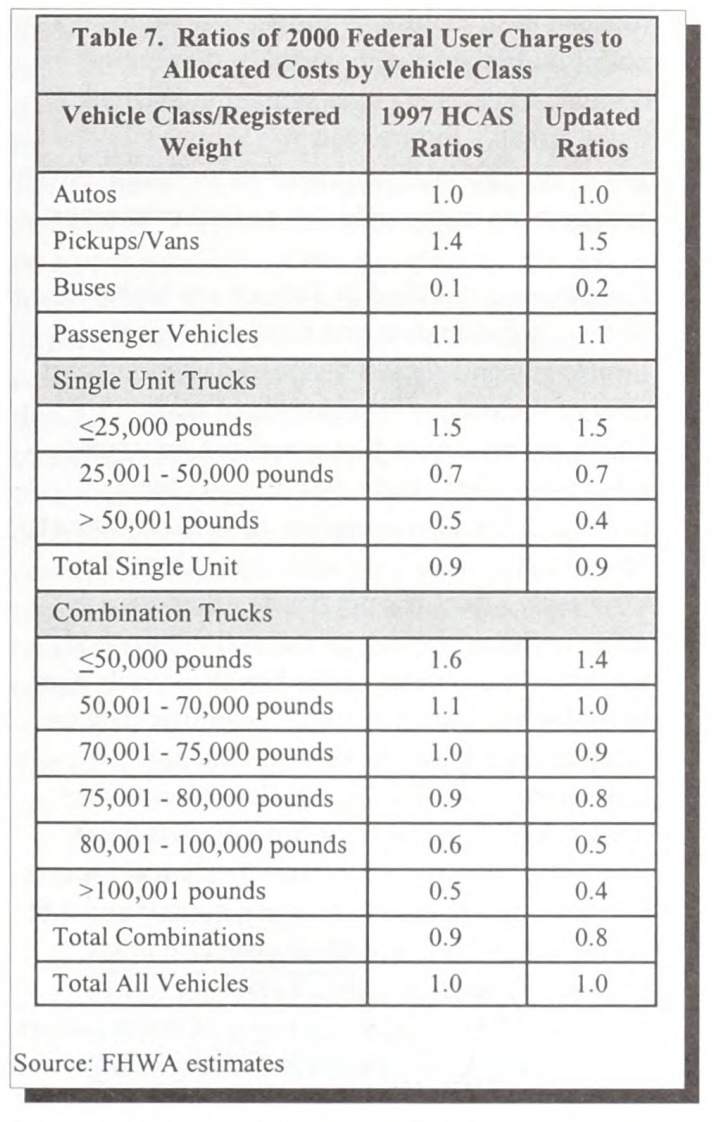Two members of the Senate Environment and Public Works Committee introduced legislation this week directing the U.S. Department of Transportation to conduct the first comprehensive study of which kinds of vehicles are responsible for which levels of highway-related costs conducted since 1997.
Sens. Cynthia Lummis (R-WY) and Mark Kelly (D-AZ) on May 17 introduced S. 1659, the “Highway Cost Allocation Study Act of 2021.” The bill is intended to be incorporated into the EPW Committee’s highway reauthorization legislation, when that draft bill is considered in committee (which could be as soon as May 26).
In their joint statement, Lummis said “Today we have over 50 million more vehicles on the road than we did in 1997. It’s critical that we understand how this significant increase is impacting our highway system so we can build a stronger, safer and more efficient system, with a plan to fund it, for the future.”
Kelly added “As an engineer and astronaut, my career has taught me about the importance of having the data to tackle a complex issue. I’m working with Senator Lummis to get the facts about our highways to make sure we continue making the investments needed to grow our economy in Arizona and across the U.S.”
The legislation would give the Department of Transportation four years to study the direct federal costs incurred by the highway use of various vehicles and report back to Congress.
Section 210 of the 1956 law that created the Highway Trust Fund and put the highway program on a user-pay, user-benefit basis, ordered the Commerce Department to study the different classes of vehicles in use on U.S. highways and “the proportionate share of the design, construction, and maintenance costs of the Federal-aid highways attributable to each class of persons using such highways,” among other things. A 1958 law extended the date of that study to January 3, 1961.
The results of that initial study were used by the Kennedy Administration to adjust the rate of trucking taxes in the 1961 highway revenue law.
A second study was commissioned by Congress in the 1978 highway act, under guidelines suggested by the Congressional Budget Office. The results of that study were used once again to inform the allocation of trucking taxes in the 1982 highway tax increase law. (See the “Reagan Devolution” paper for the full story of the 1982 tax increase.)
 USDOT commissioned a third study on its own, in the mid-1990s, after a GAO report said it would be a good idea. But Congress ignored that report’s findings when making subsequent highway user tax revenue decisions. However, the 2000 addendum to the 1997 study made it clear that, under the spending structure and tax rates in use at the time, the heaviest combination tractor-trailers (total weight over 80,000 pounds) were only paying 40 cents to 60 cents for every dollar of costs they incurred. (See table above/left.)
USDOT commissioned a third study on its own, in the mid-1990s, after a GAO report said it would be a good idea. But Congress ignored that report’s findings when making subsequent highway user tax revenue decisions. However, the 2000 addendum to the 1997 study made it clear that, under the spending structure and tax rates in use at the time, the heaviest combination tractor-trailers (total weight over 80,000 pounds) were only paying 40 cents to 60 cents for every dollar of costs they incurred. (See table above/left.)
Representatives of the Congressional Budget Office said at multiple recent Congressional hearings that having an updated cost allocation study would be helpful, especially in discussions of an eventual transition to some sort of mileage-based replacement for federal fuel taxes, where the cent-per-mile rate for a particular vehicle would be set, presuambly, with some reference to the costs incurred by the use of that type of vehicle.
(And, if Congress then decided not to charge super-heavy trucks for the full costs of their road use, it would be an informed and intentional decision, not the haphazard result of decades of policy inertia.)
For the record, documents relating to the previous cost allocation studies can be found here:

 USDOT commissioned a third study on its own, in the mid-1990s, after a GAO report said it would be a good idea. But Congress ignored
USDOT commissioned a third study on its own, in the mid-1990s, after a GAO report said it would be a good idea. But Congress ignored 

